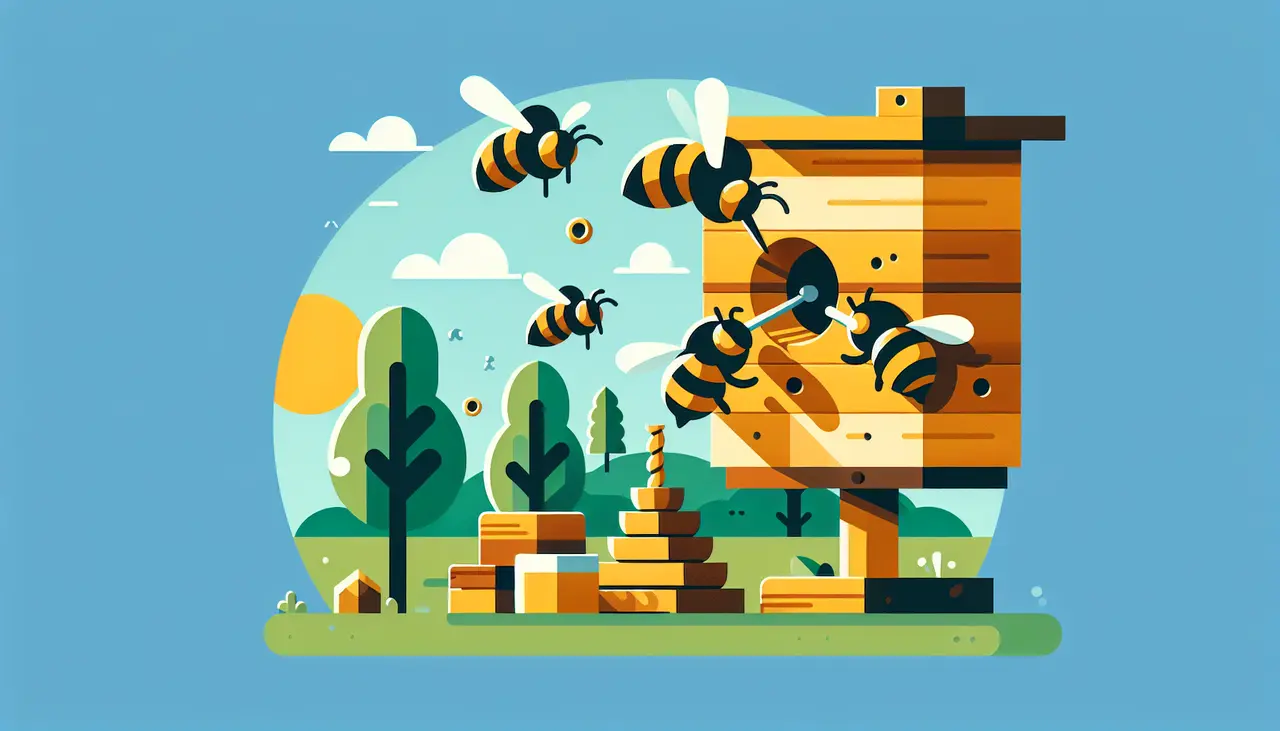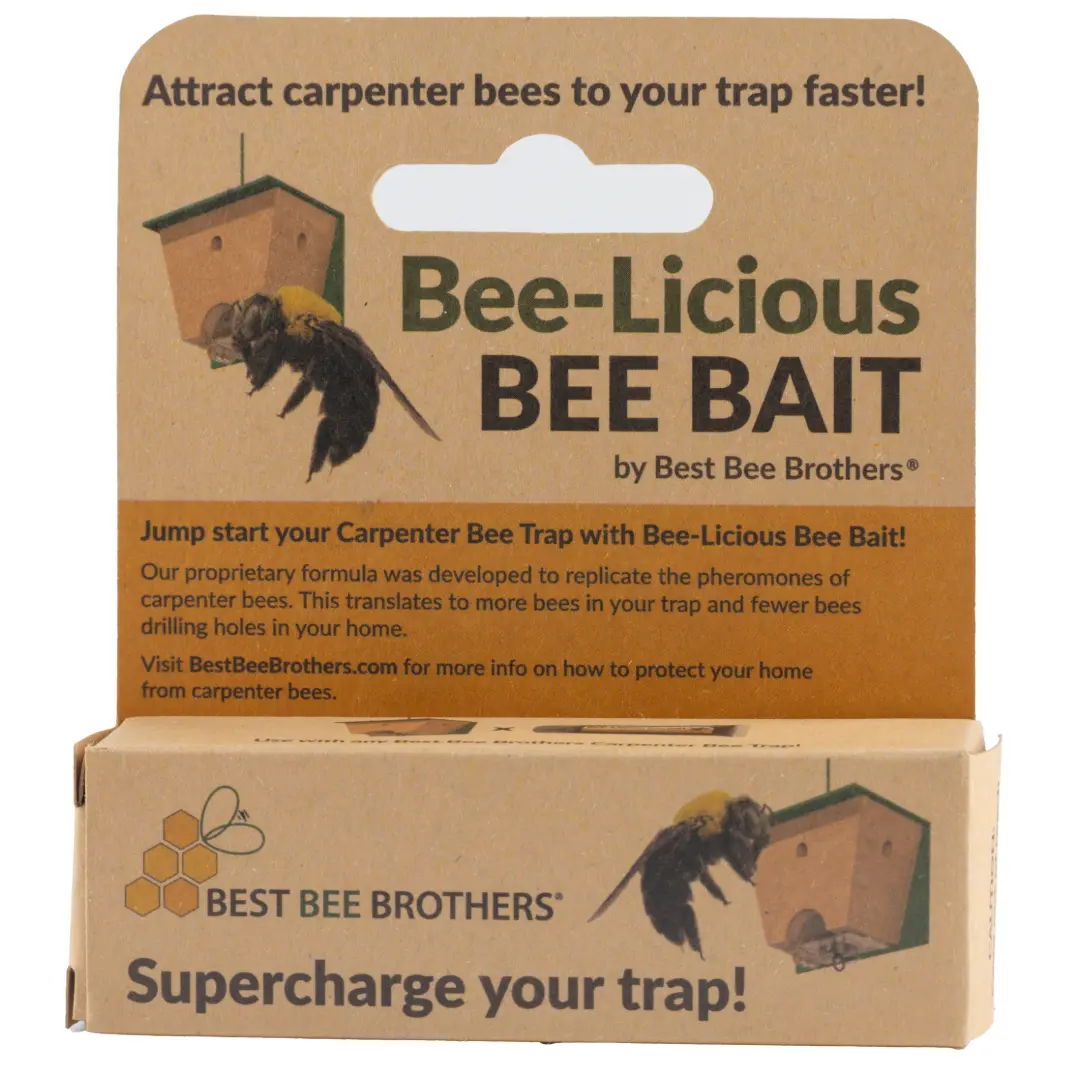Carpenter bees can be a real nuisance, leaving unsightly holes in your wooden structures. But before you reach for harmful chemicals, consider a more environmentally friendly solution. In this blog, we’ll explore how carpenter bee traps can effectively manage these insects while being kind to our planet.
Understanding Carpenter Bees and Their Impact
Carpenter bees are solitary creatures, yet their impact can be quite significant. They bore into wood to create nests for their offspring, often causing structural damage. It’s important to understand their behavior to handle them properly and sustainably.
What’s fascinating is their preference for untreated wood, making softwoods like pine more susceptible to infestation. Homeowners often find signs of carpenter bees through piles of sawdust or spotting the males hovering near entry holes. Understanding these clues can guide where and when to place traps most effectively. It’s not just about the immediate problem; it’s about understanding how best to prevent long-term damage to beloved homes and structures.
Why Choose Eco-friendly Solutions?
In an era where environmental consciousness is paramount, opting for eco-friendly carpenter bee traps aligns with sustainable living goals. These solutions bypass the need for harsh chemicals, which can leach into soil and waterways, affecting a myriad of non-target species. For instance, chemical pesticides can inadvertently harm beneficial insects like honeybees and ladybugs, disrupting local ecosystems. By focusing solely on carpenter bees, these traps serve as a targeted approach with minimal ecological footprint.
How Carpenter Bee Traps Work
These traps mimic the bees’ natural nesting preferences, attracting them into a chamber they cannot escape from. Unlike pesticides, traps focus on capturing bees without introducing toxins into the environment.
Another interesting aspect is the visibility factor of these traps. They’re crafted to be discreet and aesthetically soothing, blending well into outdoor settings such as gardens or decks. Homeowners can easily hang them where needed without worrying about disrupting their outdoor environment’s aesthetics. For a great option, check out the Ultimate Pro Carpenter Bee Trap, designed to maximize capture while maintaining a friendly look. As these traps are reusable and durable, they offer cost-effective, long-term solutions for ongoing bee management challenges, reducing the need for continual chemical applications and thus supporting sustainability.
Setting Up Your Carpenter Bee Traps
Location is key. For best results, place traps near affected areas, ideally in early spring before bees are active. Check traps regularly to ensure they’re functioning correctly, and relocate them as needed to maximize effectiveness.
The strategic placement of traps is crucial to their success. Ideally, traps should be positioned near known bee boreholes or areas of high activity. Hanging them at eaves or under overhangs where bees naturally congregate increases the chances of capture. And timing is everything—employ traps at the start of spring. This proactive step ensures they are in place when female bees are actively nesting, intercepting them before they start laying eggs and expanding their presence. Such careful timing requires understanding of local climate and bee behavior.
Don’t forget maintenance: check your traps weekly, especially during peak seasons, to guarantee efficacy. Emptying them regularly ensures they’re always ready to capture more bees, preventing any from settling back into old habits. If you notice a decline in activity, this is a positive sign, but it also might mean it’s time to move the trap to another budding hotspot! Each adjustment you make increases your defenses against these little wood-workers.
Complementing Traps
To enhance the effectiveness of your traps, consider using the Bee-Licious Bee Bait. This specially formulated bait can attract even more carpenter bees to your traps, boosting their efficiency. Think of it like sealing existing holes with wood putty or painting surfaces with protective coatings; incorporating this bait creates a well-rounded approach to pest management. The sweet aroma draws in carpenter bees, ensuring they find their way into your traps instead of your wooden structures. Together, the traps and the bee bait form a powerful duo that supports your efforts in protecting your home while being eco-friendly. So, why not give it a try? Your garden and wooden features will thank you!
Embrace Nature-friendly Pest Control
Adopting eco-friendly methods not only helps in effectively managing carpenter bees but also ensures that we’re taking care of our environment. With the right knowledge and tools, carpenter bee traps can be a great addition to your pest control strategy, combining efficiency with a passion for preservation. Explore more about these effective traps at Best Bee Brothers, where you’ll find solutions that align with your commitment to sustainable living.











Leave a comment
All comments are moderated before being published.
This site is protected by hCaptcha and the hCaptcha Privacy Policy and Terms of Service apply.